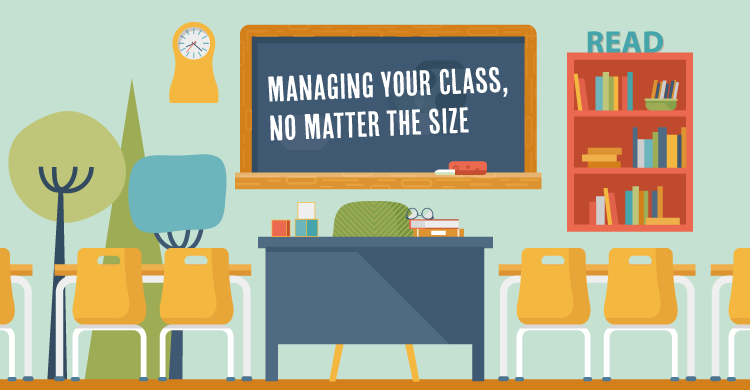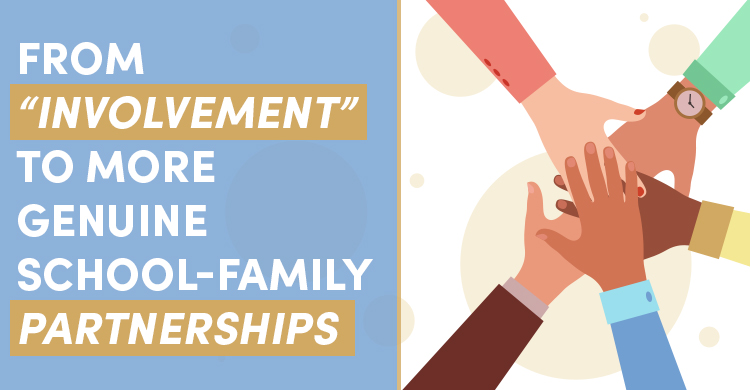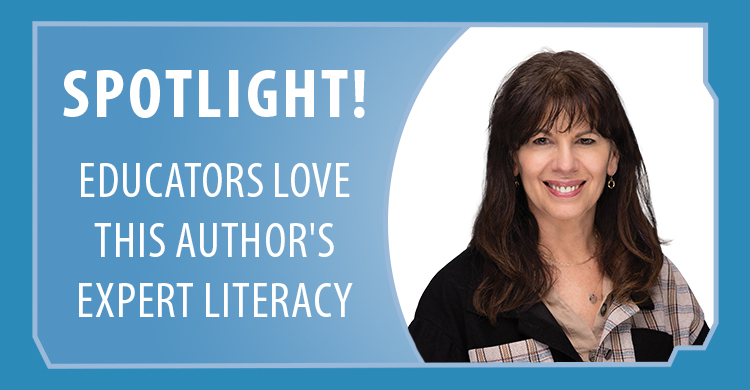Based on Seven Keys to a Positive Learning Environment in Your Classroom
One of the most often-discussed topics in education centers around the impact of class size on learning and teaching.
Educators familiar with the work of John Hattie know that he suggests the impact of reducing class size on student learning outcomes is minimal (well outside the zone of desired effects) and not worth the financial investment necessary to justify the potential benefits on work-related conditions. Equally important in this conversation (and certainly something I see in many of the remote areas I visit as a consultant) is the challenge of dealing with split classes or very small groups of students in a grade level or content area. So, if class size is more or less out of the teacher’s control, what approaches should teachers consider when dealing with large and/or very small classes?
Start with the students in your classroom
The move forward has to begin with first accepting that the students showing up to your classrooms are the best kids who are coming. That is this year’s students—not last year’s, your best year’s, or the year group that only exists in your imagination (that mythical grouping of equal-ability students who are right at the instructional level, reading level, emotional level, and social level of the lessons you have planned).
It continues from there, with the educators planning to create a positive learning environment designed to maximize the growth of all students. This challenge exists whether the teacher is trying to create stations for learning in large classrooms or trying to build connections in small groups or across grade levels.
In my book Seven Keys to a Positive Learning Environment in Your Classroom, I take the first three keys to address some key considerations for all teachers as they structure their classrooms with an eye toward maximizing student growth. Here is a brief description of those keys.
Classroom expectations: Classroom expectations and codes of conduct are condensed into a few easy-to-remember, positively stated words or phrases. Students know the expectations, and the adults model them. Behavior expectations are linked to academic expectations, setting a positive tone.
Targeted instruction: All staff members directly teach classroom expectations to students in myriad ways and in various settings (in class, the library, during assemblies, on the bus, and so on). Students receive opportunities to develop, practice, and demonstrate appropriate social and academic skills and in the same instructional design—demonstrate, practice, review, and celebrate.
Positive reinforcement: Students receive timely and specific feedback—formally and informally—on a regular basis. Celebration and recognition are in place to acknowledge, honor, and thank students for displaying positive social and academic skills.
In striving to achieve these three keys, both a positive classroom tone and learning environment are established, resulting in less lost academic focus time and more opportunities for differentiation and small-group-focused work to occur. In essence, larger classes seem even larger when a few students take the time and energy of the adults, thereby minimizing learning opportunities for other students. Smaller classes can be dominated by a single student, virtually eliminating quality learning for all.
All staff members need to contribute
Hierck and Weber (2014b, p. 114) also suggest that creating a positive classroom structure requires some key beliefs or alignments from every teacher:
- All students are valued and expected to make significant gains in their learning.
- Factors that may inhibit successful gains are temporary obstacles and challenges.
- All staff members accept responsibility for all students: students in other classrooms, students in other grade levels, students with disabilities, and students who speak another language at home.
- The status quo is never accepted; students’ expectations are set appropriately, and staff members recognize continuous improvement as the habit of great organizations.
- Change is an opportunity, and all variables are considered.
- School leaders and educators view adult behaviors as having the most effective and significant influence on student learning and behaviors.
As educators contemplate the uniqueness that occurs when student numbers are too large (or too small) for “typical” instruction, altering what they can control can ensure quality instruction is always occurring. Similarly, the response to off-task behavior should be contemplated long before the behavior occurs.
Adjust and adapt
In looking at Key 7 (Connection to the Schoolwide System), teachers need to examine their approach to those occasions when they are not seeing what they want to see. The table below outlines the two broad options available—administering consequences or discovering causes—to all teachers, regardless of their class configuration.
| Administering Consequences | Discovering Causes |
| Stops the behavior quickly; seeks immediate relief | Slowly stops behavior; delays relief |
| Teaches what not to do (direct) | Teaches what to do (connect) |
| Decreases self-concept or belief that “I am bad.” | Increases the self-concept or belief that “my behavior is bad; I am not bad” |
| Decreases positive attitudes toward school and schoolwork | Increases positive attitudes toward school and schoolwork |
| Causes withdrawal (task completion, tardy, truancy, dropping out) | Promotes enhanced participation and closing of behavioral gaps |
| Causes aggression (against property and others) | Decreases likelihood of aggression |
| Teaches students to respond in a punitive and angry manner | Teaches students to recognize the positive learning in each situation |
| Actions can harm or destroy the student-teacher relationship | Actions can enhance the student-teacher relationship |
This information makes it clear that trying to find the cause of off-task behavior is more time-consuming, causing colleagues to argue for the notion that smaller classes might afford more time to deal with these situations more effectively. However, colleagues with very small numbers will also suggest that one misbehaving student in a group of ten has considerable negative impact as well. If we don’t commit to teaching first, I don’t believe we’ll see a change in student outcomes.
I have yet to encounter a student (or adult, for that matter) who got “better” through consequence alone; consequence must be paired with instruction for a breakthrough to occur. Otherwise, the solution would be simple and would involve just getting rid of the “worst student” in each classroom.
The reality that occurs in this situation is what I call my “box of Kleenex” theory—you pull one out, and another one pops up. In the case of classrooms, poorly managed classrooms won’t get better by removing a target student. They will improve by teaching all students, in large, small, and average classes, the desired academic and behavioral targets.
Work as a team, succeed as a team
One critical component that still appears to be missing in schools that struggle with this is a cohesive, collective, supportive approach that speaks to a team. School faculties will not become teams if individual members of the staff continue to work in silos. A team develops from a group that clearly understands its collective commitment and does not devolve to pockets of excellence. In other words, the work extends beyond the collaborative team of a grade, department, or content area to the work being embraced, modeled, and lived in the classrooms of every teacher in the school. These faculties embrace the notion of “our” students, not “my” students.
As the debate about too-large or too-small classes continues, looking at options to maximize learning and create positive learning and teaching environments has to be the focus for all educators. It is through building these environments that the opportunities for learning for all, and by all, flourish.
[author_bio id=”397″]







